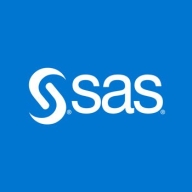

SAS Data Integration Server and Azure Data Factory compete in the data integration space. Azure Data Factory appears to have the upper hand due to its cloud-native design and diverse features, offering superior value for tech buyers.
Features: SAS Data Integration Server offers robust enterprise-level transformation capabilities, extensive integration options with SAS products, and excels in traditional ETL processes. Azure Data Factory is recognized for seamless Azure service integration, large-scale orchestration abilities, and user-friendly cloud management. It provides dynamic data transformation and management for hybrid environments.
Ease of Deployment and Customer Service: SAS Data Integration Server requires significant infrastructure and expertise, resulting in potentially complex deployments. It provides comprehensive customer support for intricate data integrations. Azure Data Factory offers a cloud-based, scalable deployment model, simplifying setup with easy configuration and efficient customer support. Its deployment process is more streamlined, benefiting businesses with quicker turnaround times.
Pricing and ROI: SAS Data Integration Server involves higher setup costs due to infrastructure needs but can lead to strong ROI in stable enterprise environments that rely on SAS ecosystems. Azure Data Factory’s pay-as-you-go model offers flexibility and lower upfront costs, making it cost-effective for businesses needing cloud scalability. It caters to variable workloads and delivers better ROI for modern, adaptive data strategies.
| Product | Market Share (%) |
|---|---|
| Azure Data Factory | 5.2% |
| SAS Data Integration Server | 0.6% |
| Other | 94.2% |

| Company Size | Count |
|---|---|
| Small Business | 31 |
| Midsize Enterprise | 19 |
| Large Enterprise | 55 |
Azure Data Factory efficiently manages and integrates data from various sources, enabling seamless movement and transformation across platforms. Its valuable features include seamless integration with Azure services, handling large data volumes, flexible transformation, user-friendly interface, extensive connectors, and scalability. Users have experienced improved team performance, workflow simplification, enhanced collaboration, streamlined processes, and boosted productivity.
We monitor all Data Integration reviews to prevent fraudulent reviews and keep review quality high. We do not post reviews by company employees or direct competitors. We validate each review for authenticity via cross-reference with LinkedIn, and personal follow-up with the reviewer when necessary.